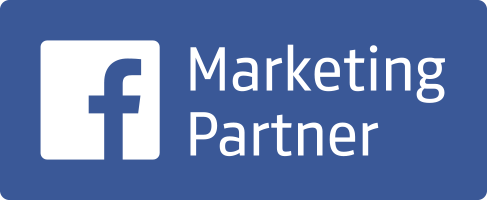
In the competitive realm of the Software as a Service (SaaS) industry, delivering a compelling SaaS sales demo is like taking a test drive before purchasing a car. Imagine walking into a dealership, and instead of hopping behind the wheel, the salesperson hands you a brochure and says, “Just trust me; it drives great.” You’d likely hesitate and want to experience the vehicle’s performance firsthand before making such a significant investment.
Similarly, a SaaS demo allows potential customers to explore your product’s features, test its capabilities, and determine if it fits their customer needs. This blog post will guide you through essential SaaS demo best practices to ensure your product shines and effectively engages your audience on the road to success.
Understand Your Audience
Before diving into the actual demo, the first and most important step is to understand your audience. Who are you presenting to? What are their specific pain points? Every SaaS product demonstration should be customized to address the needs of the prospect you’re talking to.
Best Practices:
- Research customer pain points: Ensure you’re familiar with the challenges the customer is facing and how your product can solve them.
- Tailor the demo: Customize the demo to focus on the specific features most relevant to the customer.
- Use a customer-focused demo approach: Personalize the flow based on the prospect’s industry, size, and specific use cases.
Knowing your audience enables you to align your SaaS demo with their expectations and position your product as the perfect solution for their decision-making process.
Setting Clear Objectives
Establishing clear objectives for your SaaS demo is essential. Determine your goal—increasing lead conversion, educating potential customers on product features, or demonstrating specific functionalities. Aligning your demo goals with your overall sales process can create a focused presentation that drives results.
Best Practices:
- Define success metrics: Clearly outline what success looks like for your demo, whether it’s lead conversions or product adoption.
- Align demo objectives with business goals: Ensure every element of the presentation contributes to achieving your larger SaaS marketing or sales goals.
- Set measurable outcomes: Identify key performance indicators (KPIs) such as demo engagement, conversion rates, or direct sales resulting from the demo.
- Prepare relevant data: To make the demo more impactful, use statistics, customer feedback, or case studies that directly support your objectives.
Setting clear objectives allows you to guide your demo toward measurable success and ensure it aligns with your sales team’s goals.
Start with a Strong Introduction
First impressions matter, especially in a SaaS product demo. The introduction sets the tone for the entire presentation. You want to grab the prospect’s attention and clearly outline what they will gain by the end of the demo.
Best Practices:
- Start with a quick summary of the customer’s needs and how your product addresses them.
- Set clear expectations: Let them know the structure of the demo, including which features or functionalities you’ll be showcasing.
- Establish the value proposition early on, focusing on your product’s ability to solve problems, improve workflows, or save time.
This ensures you capture attention and keep the audience engaged throughout the session.
Focus on Key Features, Not Everything
One common mistake in SaaS product demonstrations is trying to show too much. Instead of overwhelming the prospect with every feature, focus on the most relevant aspects of your product.
Best Practices:
- Highlight the key features that will most impact the prospect’s specific needs.
- Showcase how these features solve their pain points through real-world applications or customer success stories.
- Avoid feature overload: If the audience is interested in more details, you can provide additional materials or schedule a deeper technical walkthrough after the demo.
Remember, less is often more when it comes to effectively demonstrating a product. The goal is to leave your prospect wanting to learn more.
Use Storytelling to Make an Impact
While it’s tempting to walk through each feature step by step, nothing resonates more than a good story. By framing your SaaS demo as a narrative, you can make complex features more relatable and easier to understand.
Best Practices:
- Present the demo as a product tour that takes the customer on a journey, showing how the product can help them overcome challenges.
- Use case studies or success stories to provide real-world examples of how your product has helped others in similar situations.
- Position the customer as the hero of the story, with your SaaS product as the tool that empowers them to succeed in their decision-making process.
Storytelling makes your product come to life and helps prospects envision themselves using it in their day-to-day operations.
Stay Interactive
Demos shouldn’t be one-sided presentations. The more interactive the session, the more engaged your prospect will be.
Best Practices:
- Ask questions throughout the demo to keep the audience involved. For example, “Is this a challenge your team currently faces?”
- Invite the prospect to a hands-on demonstration, inviting them to test out the software or interact with key features during the demo.
- Incorporate a live Q&A session to address any immediate questions or concerns.
An interactive demo ensures that prospects stay focused and gives you real-time feedback on their specific concerns, improving your chances of delivering a successful demo.
Address Objections Proactively
It’s natural for prospects to have objections during a SaaS demo. Instead of waiting for questions, proactively address common objections as part of the demo.
Best Practices:
- Identify the most common objections, such as pricing, integrations, or ease of use, and weave responses into your demo script.
- Highlight key features or integrations that neutralize these objections before they arise.
- Use customer-focused stories to show how others have overcome similar concerns with your product.
By handling objections upfront, you not only position your product positively but also show your prospects that you understand their concerns and have already thought of solutions.
End with a Clear Call to Action
After presenting your SaaS product demonstration, it’s critical to guide the prospect on what to do next. A strong call-to-action (CTA) at the end of the demo can significantly increase your chances of moving them further along the sales funnel.
Best Practices:
- Summarize the key points covered in the demo, reinforcing how your product addresses their specific needs.
- Offer a clear next step: invite them to start a free trial, schedule a follow-up meeting, or explore your pricing options.
- Personalize the CTA based on what was discussed during the demo, making it specific and actionable.
A well-executed SaaS demo should end with the prospect feeling informed and ready to take the next step with your product.
Conclusion
Conducting an effective SaaS demo is both an art and a science. By following these SaaS demo best practices, you can tailor your presentation to the prospect’s needs, keep them engaged, and ultimately showcase your product in the best light.
Remember to stay focused on solving their pain points, keep the demo interactive, and always end with a compelling call to action. When done right, a great demo can be the key to winning more deals and growing your SaaS business.
Ready to implement these best practices in your next presentation and see the difference?
Contact Build Media Group today to learn how we can assist you in elevating your SaaS marketing strategies, improving your onboarding process, and crafting compelling SaaS demos to better serve your target audience.



